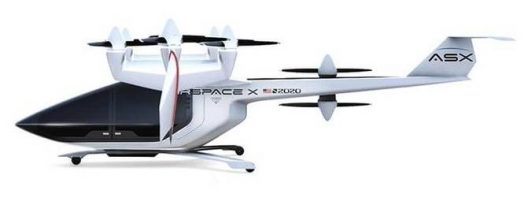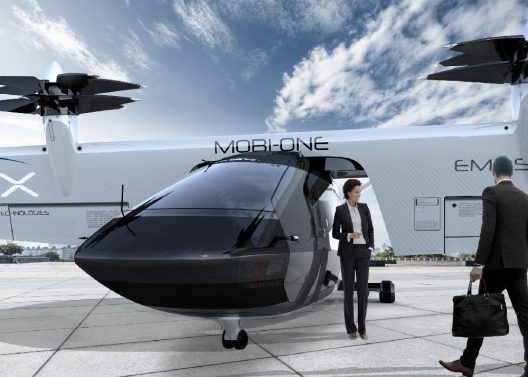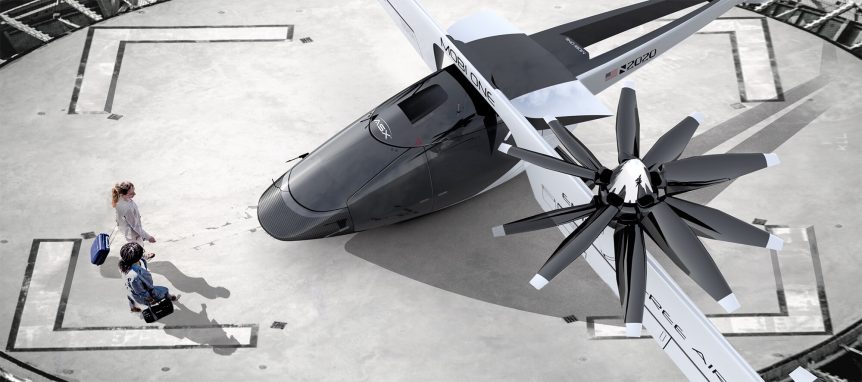Two years ago, the Airspace X (ASX) MOBi promised to achieve passenger costs equal to an Uber Black ride. More importantly, the company promised that it might take back our lives, eliminating the frustration and wasted time lost in traffic gridlock.
We caught up with ASX at this year’s Sustainable Aviation Symposium, held at UC Berkeley.
Dr. Anita Sengupta, co-founder and Chief Product Officer for the firm explained the current outlook for ASX. Where the MOBi-One (Mobility-One) looked like an offshoot of Airbus’s Pop-Up modular vehicle, it is now close to one of Uber’s concept craft used to guide designers.
Dr. Sengupta’s background as aerospace engineer, rocket scientists and veteran of the space program has led her from deep space back to earth and to more terrestrial flight regimes. She explains that transition in this short video.
She started her career at Boeing Space and Communications, helping launch vehicles and communications satellites. She went on to 16 years with NASA, “…Where her engineering projects included her PhD research on developing the ion propulsion system for the Dawn Mission (currently in the main asteroid belt), the supersonic parachute that landed the Curiosity rover on Mars, and the Cold Atom Laboratory an atomic physics facility now on board the International Space Station.”
She left NASA to lead the development of the Hyperloop as Senior Vice President of engineering systems at Virgin Hyperloop. In 2019, she become a co-founder and Chief Product Officer of Airspace Experience Technologies, or ASX (asx.us) in Detroit Michigan.
In 2019 she became a co-founder and chief product officer of Airspace Experience Technologies, or ASX (asx.us) in Detroit, Michigan. She has adopted many Motor City approaches to MOBi-One. Her biography in the SAS 2019 program explains, “As an engineering savvy executive and pilot, she is now leading the mobility solutions for smart cities by eliminating congestion and reducing the carbon footprint of air travel.”

MOBi-One at intermediate stage of development. Note propellers above and below tilting wing, where now their line of thrust follows the wing’s chord line. Dual tail lift devices are now in the V-tail at the extreme end of the tail boom
She looks forward to being able to reduce ride costs by lowering the unit cost of vehicles by leveraging Detroit’s ability to mass manufacture vehicles. Because MOBi will fly at low altitudes, a good many problems with things like pressurized cabins will be eliminated. Aircraft will key off vehicle-to-vehicle (V2V) automotive technology to help with close-in separation. Noise signatures will be reduced by 20 dB over to maintain neighborhood and flight path acceptance. These and other technical answers are essential to a thriving future for the new industry. With various sources predicting a $1.3 trillion market and as many as 200 manufacturers hoping to exploit that market, it will take intelligence and daring to find success.
ASX’s mission gives Detroit its due. “By offering a eco-friendly, quiet and connected ‘electric vertical takeoff and landing’ (eVTOL) aircraft that leverages the perfect fusion of proven automotive grade innovation and aviation technology, ASX can re-imagine the daily commute and give commuters time back to be more productive.

Passengers waiting to board will find excellent view with seatback video screens if the the view does not please
Bob A. Lutz – Former Vice Chairman for General Motors and a member of the ASX advisory board, reflects this philosophy. “Detroit and Michigan are strategically positioned to leverage its industrial base to lead in this rapidly emerging market for On Demand Air Mobility”
With the vision and engineering skills people such as Sangita Gupta can provide, these visions have a good chance of becoming realities.

